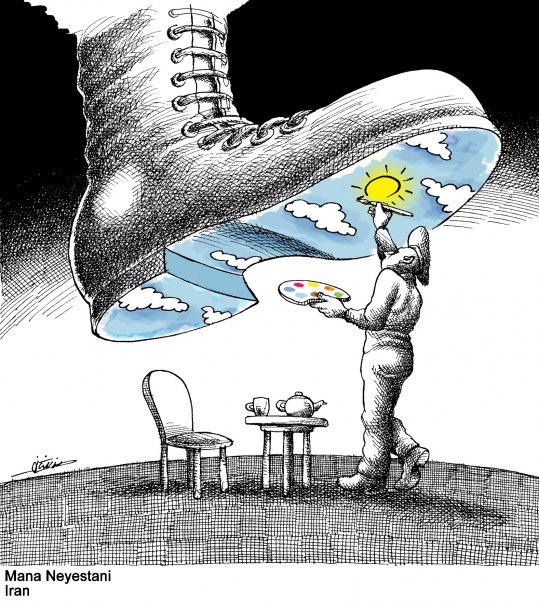 If It’s Not DENIAL, Then What Is It?
If It’s Not DENIAL, Then What Is It?
Imagine your spouse seems to be suffering because of what appears to be a sunburn. They can look in the mirror and see the red blisters. They step into a hot shower and complain about the pain of the water on their skin. You remind them that they definitely fell asleep at the beach without putting on sunscreen. Your spouse doesn’t agree. Instead they say,
“I don’t know why my skin hurts. And who, by the way, covered me with pink make-up? I definitely do NOT have a sunburn.”
Other family members might join you and try to convince your spouse that they obviously have a condition known as a ‘sunburn.’ Your spouse resists. Even though their skin hurts, it is pink and peeling, and they did fall asleep in the sun, they continue to insist they do not have a sunburn. Denial, right?
Maybe. Or it might be Anosognosia.
Anosognosia is my new sixty-four-thousand dollar word. It is an amazing word and I love it so much I wish I could go on Jeopardy right now, and the host would ask (and I know it would be a new host and that makes me sad),
“What is the inability to adjust our self-image or perceive our mental health condition accurately?”
And I would punch my little LED-lit button and scream,
“ANOSOGNOSIA!”
Why not simply call this state of mental-mismatch denial? According to the National Alliance on Mental Illness (NAMI), when we talk about anosognosia it is usually when we are referring to someone who is also suffering with a mental illness.
“Anosognosia means that someone is unaware of their own mental health condition or that they can’t perceive their condition accurately and it is a common symptom of certain mental illnesses [https://www.nami.org/About-Mental-Illness/Common-with-Mental-Illness/Anosognosia].”
You see our sunburn-sufferer might also be suffering with schizophrenia, bipolar, or dementia. If that is the case, then they may be part of the population whose apparent ‘denial,’ is in fact, anosognosia.
If you are reading this article I imagine you are either curious or you are looking for tools to parent, live with, or love someone with this condition. I’ll try to help by giving you a way to conceptualize the problem so it makes sense, tools to communicate with that suffering-someone, and most importantly, ideas to self-care. You’re gonna need it.
Why Deny?
Denial is more than a beautiful river in Egypt. Denial is the word children, friends, spouses, and siblings can use to conceptualize the dichotomous thinking exhibited by those self-destructive family members who profess to love us.
We ask ourselves,
“How can they love us and drink themselves to illness/treat us this way/refuse to get help?”
We answer ourselves,
“They must be in denial about their problem.”
Unfortunately when we (the healthy ones) use the word denial to explain why you (the family member engaging in the destructive behavior that is hurting us) won’t change, we get angry. The implication is you know you have a problem and you are choosing the behavior over us.
Denial goes a long way explaining how we humans hurt each other in the name of protecting a behavior we love. Yes denial has been around for centuries helping humans justify, minimize, and blame others for relationship-busting behaviors:
Justifying
“I’ve got a tough job and I’ll cut down once things even out at work.”
“My parents fought in front of us and I turned out just fine.”
“But you and the kids love to travel to my races.”
Minimizing
“I don’t drink that much.”
“We haven’t fought in weeks.”
“When was the last time you and the kids were actually awake when I was training? That’s why I mostly train in the mornings and do my long rides when Junior has an out-of-town soccer game.”
Blaming
“I only get this drunk when you’re acting like this.”
“If you wouldn’t push me on that issue I wouldn’t fight back.”
“And you think you’re so perfect?”
The Mental Illness Connection
If your self-destructive family member also suffers with a mental illness, then anosognosia may be a better explanation than denial. I know no one wants to hear that their struggling loved one may also have an underlying personality disorder or suffer from bipolar disease, but it is something to consider. How would you know, especially if your loved one refuses to see a mental health professional?
Behavioral science is different from medical science in that we rely on self-report from the sufferer and observations from family members like you to make our diagnoses. Once we get those reports we can triangulate the data and get a fairly accurate idea of what the patient suffers from. I say fairly accurate because a medical exam needs to be done as well. For example someone who is acting out on the verge of a diabetic coma can look a lot like an angry drunk. It is important that we know the difference.
Here’s Your Sign
Your self-destructive loved one might have an underlying mental health issue if:
- They sound like they do. Do a you tube search for gaslighting, emotional abuse, verbal abuse, and psychological abuse. You don’t need to watch the videos just listen to them. If you recognize the words in the videos because you hear them from your self-destructive loved one, then they might be also be suffering from an undiagnosed mental illness.
- They act like they do. The Diagnostic and Statistical Manual 5th Edition is commonly used by mental health professionals to categorize behavior. Do your Google search for ‘DSM 5 ____________[enter troubling behavior].’ The search will help you understand that a diagnosis depends on the type of behavior, how many times it occurs, and how long it has been happening. WARNING: this does not make you a mental health professional.
- Their family members are already diagnosed. Schizophrenia and bipolar have strong family components. If you discover that your self-destructive family member’s near-degree relatives suffer from bipolar or schizophrenia that was diagnosed, or behavior that was similar but undiagnosed, then your loved one may also be suffering.
AND
- They have a medical all-clear. They have regular physicals and get blood work-ups. There are no underlying medical conditions or chronic pain complaints. Remember what I said earlier about diabetic comas? Sometimes medical issues can explain bad behavior so you’ll need to rule that out.
Pursuers and Distancers Get Nowhere
This is the part where you get the communication tools, coping strategies, and the self-care advice. If I do my job here, the tools will help you dear reader stay in relationship with your suspected agosognosia-sufferer and out of the ‘trying to convince them they have a problem’ loop. Let’s call this the pursuer-distancer dynamic.
If you try to convince your suffering spouse/parent/sibling that they have a problem, that is the pursuit. If they say, “Nuh uh,’ that is the distancing.
Remember Nuh-uh is a classic symptom of denial and anosognosia.
Reformed pursuers who choose to live with anosognosia-sufferers will spend a lifetime learning to lower the bar regarding what they can expect. Books like ‘His Needs-Her Needs’ won’t apply to your relationship because your needs will never be understood by your suspected sufferer. You will need to become an expert at communicating, self-soothing, and ultimately meeting your own needs.
Communicate and Cope
One way to communicate with your suspected anosognosia sufferer is the Reflection/Self-Care Combo. It looks like this:
- [Use your inside voice and say] “I love my partner/sibling/parent and I want to stay in relationship with them but I’m in distress right now and I feel like they need to know about it. I will not fall into the pursuer-distancer dynamic.”
- [Use your outside voice and say] “Hey [insert suffering-partner/friend/parent name here] I notice that I’m feeling [insert distressing feeling here]. I’d like it if you could help me by [insert your need here].”
- Now just wait. If they meet your need, excellent. If they don’t, it’s time to pull out the healthy coping strategies, support network, and distracting hobbies. Self-care is ultimately how you will meet your needs.
Living with and loving someone suffering from anosognosia or denial takes understanding, communication tools, and excellent self-care strategies. I hope this article helped you understand the difference between denial and anosognosia but I get it. In the end it might not matter because both actions feel the same on your end. Choosing to stay with a self-destructive family member who uses denial or suffers with anosognosia is personal and no one can tell you what to do unless they have walked a mile in your shoes. The tools in this article can help, but ultimately you may need outside help to stay or walk away. Individual, couple, and family counseling can help you make that decision.






